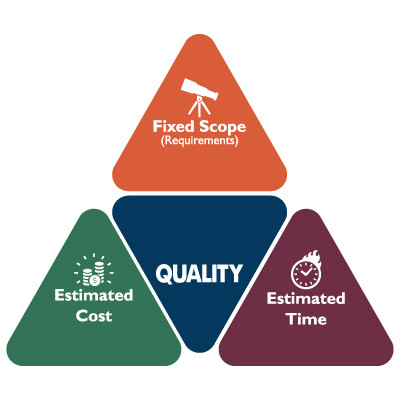Business owners have a lot of duties and responsibilities, and while you can hire a lot of people to cover some of the more stressful ones, it might feel strange to outsource your company’s technology management. You know IT is important, so that’s why you feel like you have to do it yourself, or at least in-house, but in reality, you’re the last person who should be working with your technology—and we’ll explain why.
Apex Technology Blog
There’s a specific stress that comes from the disconnect between the money you invest in your business IT and the value that comes back from it. Sure, you know what the money is being spent on… but that’s a far cry from knowing how these investments are shifting the needle.
Let’s discuss the importance of understanding what your IT is telling you and when you need to demand more information… politely, of course.
With cloud computing, your business has access to tools that fundamentally change the way work takes place. Several of the biggest reasons to adopt the cloud include flexibility, efficiency, and scalability. How are you planning to use the cloud to add or remove resources to your business initiatives as needed? Today, we want to share how scalability works and how your business can fully leverage it with the cloud.
Let’s be honest, you probably love your IT guy. He’s great at swooping in to fix a stubborn printer or reset a forgotten password. He keeps the daily tech hiccups at bay. However, here’s an important question that might keep you up at night… is he helping your Charlotte business grow?
The difference between reactive support and proactive strategy is likely costing you more than you think.
As necessary as it is, business technology tends to be expensive, especially when things go wrong. Historically, these costs took the form of capital expenditures, which meant they were inherently expensive and unpredictable by nature.
This is precisely why it is so important to shift your business IT to an operating expense. Let’s explore why this is the case and how to implement this change.
How long has your workstation been in use? How long does it take to boot up, to access your user profile, to load the documents you need to work on?
It can be extremely tempting to put off any investment into new hardware… after all, it still works, doesn’t it? Well, depending on your answers to the above questions, it might not. Don’t fall into the classic trap of relying on hardware that is simply too old to support your needs. It’s more expensive than you’d think.
Many—we’d go so far as to say most, at some times—businesses have a pretty concrete view of the role that their IT plays in operations: cost center, money pit, necessary evil.
Something we’ve realized, however, is that these impressions are simply warning signs that a business’ technology strategy and approach need some attention. Let’s identify three signs that might be all too familiar to you, and address what can be done to change course and help turn your IT into a contributing part of your overall productivity.
Is your IT support less like a helpful partner and more like a silent saboteur? Many small and medium-sized business (SMB) owners in Charlotte feel stuck, tolerating subpar service because switching seems too daunting. But what if your current provider is actively hindering your growth and security?
Don't let fear keep you tied to frustrating IT. Recognizing the warning signs is the first step toward finding a provider who offers true peace of mind. Let's uncover the red flags you simply can't afford to ignore.
Deals are great, aren’t they? Offering some money and getting more than you’d expect in return… It’s the next best thing to free. It’s also really nice to get something fast.
Not so fast, though. As nice as they can make things seem, “cheap” and “quick” aren’t often synonymous with “effective” or “valuable.” In fact, selecting the presumably easy route regarding your business technology can ultimately lead to bigger problems in the form of something called tech debt.
Nowadays, the average business leans pretty heavily on mobile devices to some degree, particularly as they make business productivity—and thereby, competitiveness—more easily attainable. However, this also makes it essential that a business using mobile devices has a means of managing them effectively.
Let’s explore the concept of mobile device management, and discuss some ways that your business can take advantage of it.
There is a concept known as the iron triangle that provides a simple framework for project management by outlining the balance between your costs, your available time, and the desired quality of your outcome.
Traditionally, the iron triangle helps illustrate how these factors impact each other. Instead, we wanted to take advantage of the principles of the triangle to explore how beneficial it can be to outsource IT services.
Are you paying attention to where you spend your IT dollars and whether or not you are making the most of your budget? It’s important to assess your needs before making any major technological purchase, including the goals, challenges, and pain points you are trying to solve. With the right approach, you can increase the value you get out of your IT—particularly with the following strategies.
If you could generate more revenue without spending more, wouldn’t you?
If you share most people's goals and aspirations, the answer is a resounding and enthusiastic “yes.” Scaling a business is an important element of continued success—provided it is carried out correctly. Let’s discuss how you can help ensure your success, partly by implementing the right technology.
SMBs need to be able to navigate the complexities of IT, whether it’s with a completely outsourced IT department or an in-house team of technicians. However, if you are thinking of technology management in this black-and-white way, you are eliminating the potential for enormous benefit through the use of co-managed IT.
Businesses are increasingly reliant on technology, and effectively managing IT support costs has become crucial. With approximately three to six percent of a company's revenue allocated to technology expenses, exceeding the monthly budget can have adverse repercussions on the ability to allocate funds elsewhere.
Printing has been a major part of most businesses for a long time. It’s how ideas were shared for decades. The past couple, however, have seen the need for printed resources go way down, but that often doesn’t stop businesses from wasting useful capital on unnecessary printing. This month, we thought we’d give you three tips to help you reduce your printing costs, month after month.
While one of the big selling points of the cloud has always been how cost-effective it can be, it is important to remember that this isn’t always the case. There are situations where the value that a business gets from the cloud isn’t really worth the price of admission. Let’s take a few moments to break down how you can evaluate the value that the cloud can offer you, and how to use this data to your advantage.
Nowadays, you can’t afford not to have some portion of your business’ budget set aside for cybersecurity. The question is, how much do you need, and what should you be spending it on first? Let’s take a few moments to dig a little deeper into this question and examine a few cybersecurity protections you should establish as your business’ baseline defenses.





























